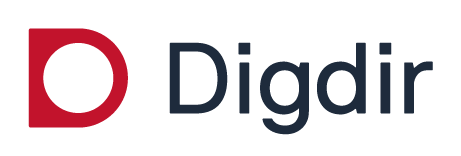Velkommen til utstillingsrommet med demo-tjenester og -hendelser, som demonstrerer bruken av CPSV-AP-NO!
CPSV-AP-NO ⧉ er den norske applikasjonsprofilen av EUs Core Public Service Vocabulary Application Profile (CPSV-AP) ⧉, for beskrivelse av tjenester og hendelser.
Tilbakemelding: Vennligst registrer eventuelle tilbakemeldinger som Github Issues ⧉.
Forbehold: Demoressursene tilgjengeliggjort via de enkelte utstillingsrommene er kun ment for demo- og testingsformål.
Resten av teksten er kun på engelsk.
Purpose
This showroom is meant to
-
demonstrate how to use CPSV-AP-NO to describe services and events;
-
demonstrate some cross-references between services/events and other resources demonstrated in some of the other showrooms;
-
provide reusable, machine-readable descriptions of services and events, for testing and demonstration purposes.
Disclaimer: The machine-readable demo services and events are meant for demo purposes only. They do not represent any real world phenomena at all. On the other hand, they are supposed to syntactically conform to CPSV-AP-NO.
Demo resources in this showroom
In this showroom we have a catalog of demo services and demo events. Since the demo examples are trying to be "technically complete", only some of the classes and properties are explained here.
Figur 1 illustrates the Demo Public Service 1 (<demoPublicService1>) that is in the catalog:
-
This demo public service has the following annotation properties which are all mandatory:
-
name: "Demo Public Service 1" in English, and "Demo offentlig tjeneste 1" in Norwegian Bokmål,
-
description: "For demo and testing only" in English, and "Kun for demo og testing" in Norwegian Bokmål,
-
identifier: "https://w3id.org/demo-resources/demo-services-events#demoPubService1".
-
-
This public service
-
has <demoPossibleOutput1> as a possible output,
-
has <demoReqEvidence1> as a required evidence,
-
is grouped by, or supports, <demoLifeEvent1>.
-
-
This public service has
-
<demoPubOrg1> as its competent authority,
-
<demoContactPoint1> as its contact point.
-
-
This public service
-
is available via the channel <demoChannel>,
-
has <demoCost1> as the cost.
-
-
This public service
-
follows the rule <demoRule1>,
-
has <demoLegalResource1> as a related legal resource.
-
Some cross-references with other demo resources
Note: Not all possible cross-references are demonstrated in this showroom. The lists are thus not exhaustive.
Services/events and classifications, for example:
-
When describing a service/event/etc., and where coded values are used, the coded values should preferably be chosen from controlled vocabularies (i.e., classifications).
-
Examples of properties with coded values are spatial coverage (dct:spatial) ⧉, functions of government (dct:type) ⧉, status (adms:status) ⧉ etc., which are demonstrated in e.g. Demo Public Service 1 (<demoPublicService1>).
-
Classifications should therefore be made available, also machine-readably.
-
Services/events and concepts, for example:
-
A service/event/etc., may refer to concepts that are relevant for understanding the service/event/etc.
-
For example, our Demo Public Service 1 (<demoPublicService1>) refers to "demo concept 1" that is demonstrated in our showroom with demo concepts.
-
Services/events and datasets, for example:
-
A required evidence that is needed in order to execute a service, may be a part of a dataset.
-
For instance, the required evidence <demoRequiredEvidence1> to our <demoPublicService1> is part of the dataset Dummy dataset 1. Datasets are demonstrated in our showroom with demo datasets.
-
-
Similarly, a possible output from a service may be a part of a dataset.
-
For instance, the possible output <demoPossibleOutput1> of our <demoPublicService1> is a part of the dataset Dummy dataset 1.
-
-
An event may be described at a dataset, in order to e.g. distribute the events / event streams as datasets.
-
For instance our <demoEvent1> is described at the dataset Dummy dataset 1. Our showroom with demo datasets demonstrates further how to connect a dataset to its distributions and data services.
-
Services/events and information models, for example:
-
A required evidence that is needed to execute a service, or the possible output from a service, may a part of a dataset and thus may conform to one or more standards (incl. information models).
-
This is demonstrated and explained in our showroom with demo datasets.
-

